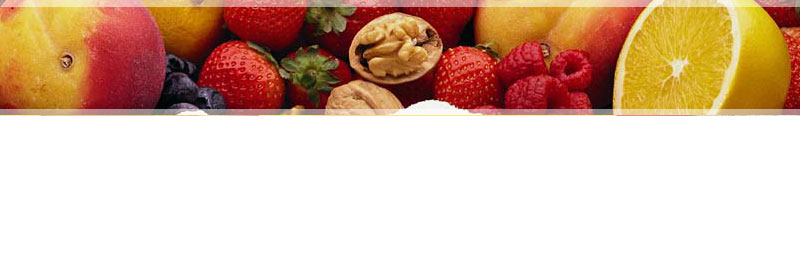| Vanadium | ||||||||
| print the page | email the page |  |
|
|||||
- Why vanadium is good for you
- Important vanadium facts
- Groups at risk of vanadium deficiency
- Symptoms of vanadium deficiency
- Vanadium and health
- Vanadium in foods
- Vanadium recommended daily intake (RDI)
- Vanadium works best with
- Overdosage, toxicity and cautions for vanadium
Vanadium is a trace mineral which is found in the soil and in small amounts in many common foods.
Vanadium is required for proper growth and bone development and also for normal reproduction.
Vanadium is an essential trace mineral that is required in the diet in very small amounts - the actual levels required to meet recommended intake have not yet been confirmed, so use supplements with caution.
- Vanadium can be found in many forms: vanadyl sulphate and vanadate are two of the most common forms
- Some medical experts consider vanadium supplements as a drug, because of its potential toxic effects
- Vanadium is released by petroleum products
Advertisement
Groups at risk of vanadium deficiency
Vanadium deficiency is rare in humans.
Symptoms of vanadium deficiency
Vanadium deficiency is rare in human. If there is a vanadium deficiency, it may cause the following:
|
- Diabetes - limited animal and human studies have shown vanadium stabilises blood glucose levels for all types of diabetes and also reduced LDL ("bad") cholesterol levels. These studies are only in the preliminary stage and more research is required to confirm their results
People who wish to take an vanadium supplement should talk to a medical professional BEFORE taking it.
Advertisement
Vanadium can be found in:
- Black pepper
- Dill seed
- Peanut butter
- Cod fish
- Scallops
- Chicken breast
- White rice
- Egg yolk
- Mushrooms
- Olives
- Shellfish
- Vegetable oils
Vanadium recommended daily intake (RDI)
| RDA | lifestage | age | amount |
|---|---|---|---|
| INFANTS | 0-6mths 7-12mths |
n/a* | |
| CHILDREN | 1-3yrs 4-8yrs |
n/a* | |
| CHILDREN | 9-13yrs 14-18yrs |
n/a* | |
| ADULTS | 19-50yrs | 0.5-1.0mg | |
| SENIORS | 51+yrs |
0.5-1.0mg | |
| PREGNANT | all ages | no info | |
| LACTATING | all ages | no info | |
| TOLERABLE UPPER LIMIT | lifestage | age | amounT |
| INFANTS | 0-6mths 7-12mths |
n/a** | |
| CHILDREN | 1-3yrs 4-8yrs |
n/a** | |
| CHILDREN | 9-13yrs 14-18yrs |
n/a** | |
| ADULTS | 19-50yrs | 1.8mg | |
| SENIORS | 51+yrs |
1.8mg | |
| PREGNANT | all ages | n/a** | |
| LACTATING | all ages | n/a** | |
| Toxic Levels | > 2.5mg per day for oral ingestion Inhaled vanadium is more toxic than ingested vanadium |
||
The tolerable upper limits should only be taken for short periods and only under medical supervision.
* The recommended daily intake of vanadium for infants, children and pregnant / lactating women has not yet been determined due to a lack of data about the adverse effects in this age group. The only source of vanadium intake should be from food.
** The tolerable upper limit for vanadium for infants, children and pregnant / lactating women has not yet been determined due to a lack of data about the adverse effects in this age group. The only source of vanadium intake should be from food.
|
|
Overdosage, toxicity and cautions for vanadium
Vanadium has an antagonistic effect on the following nutrients:
CAUTIONS
- Vanadium supplements - the toxicity and safety of these supplements have not been thoroughly studied and some supplements have very high doses and should NOT be taken
- People taking Heparin - tests have shown that vanadium can stop the drug heparin from working properly and caused blood clotting. People taking the drug Heparin should NOT take vanadium supplements

references
- Bhanot S, McNeill JH. Vanadyl sulfate lowers plasma insulin and blood pressure in spontaneously hypertensive rats. Hypertension. 1994;24:625-632
- Brichard SM, Henquin JC. The role of vanadium in the management of diabetes. Trends Pharmacol Sci. 1995;16(8):265-270
- Goldwaser I, Gefel D, Gershonov E, Fridkin M, Shechter Y. Insulin-like effects of vanadium: basic and clinical implications. J Inorg Biochem. 2000;80(1-2):21-25
- Osiecki, H. The Nutrient Bible. Bio-Concepts Publishing QLD, 2002
- Whitney EN, Cataldo DB, Rolfes SR. Understanding Normal and Clinical Nutrition, 6th Edition. Wadsworth/Thomson Learning, 2002

